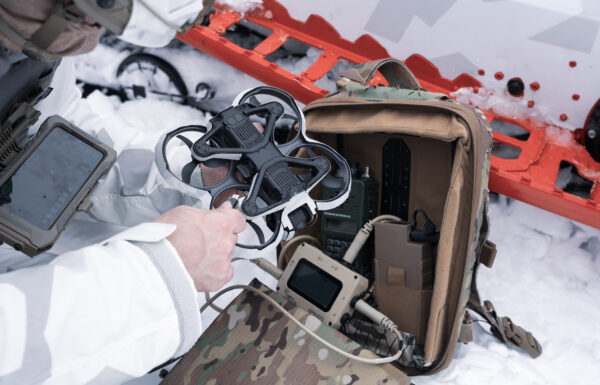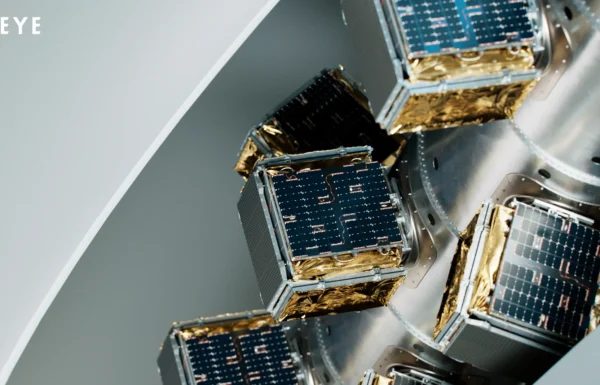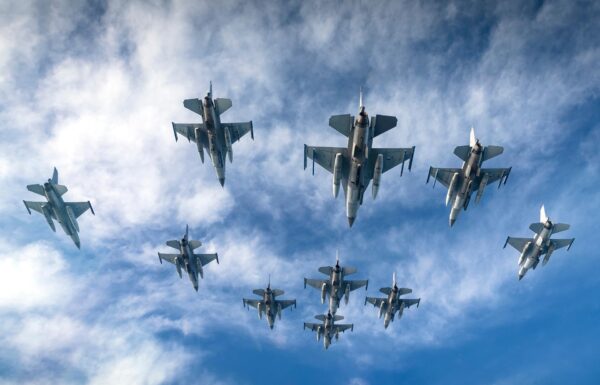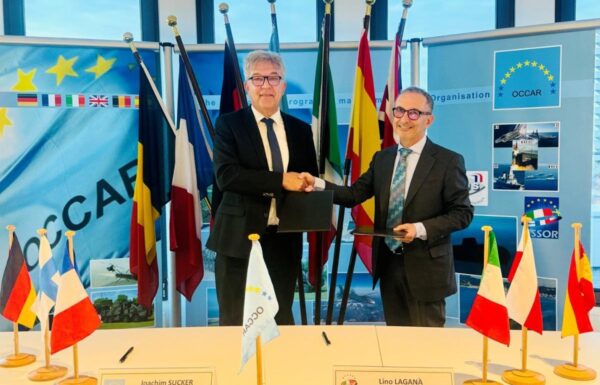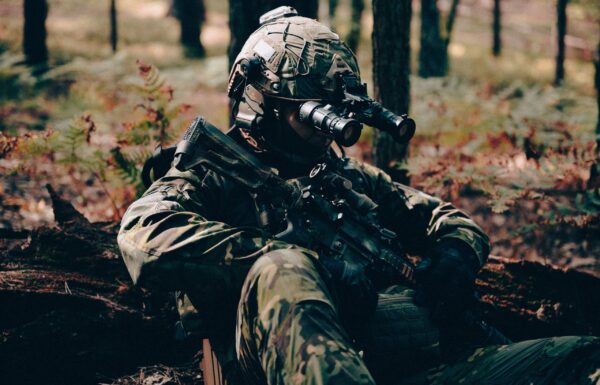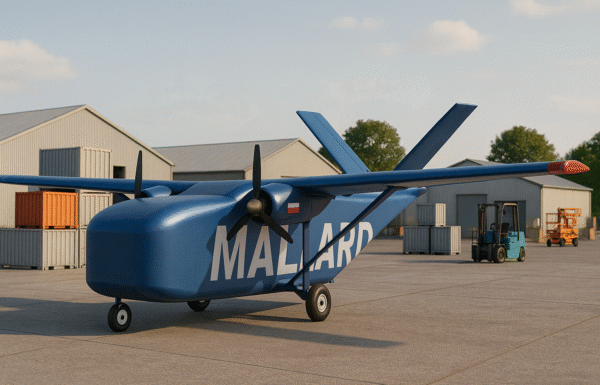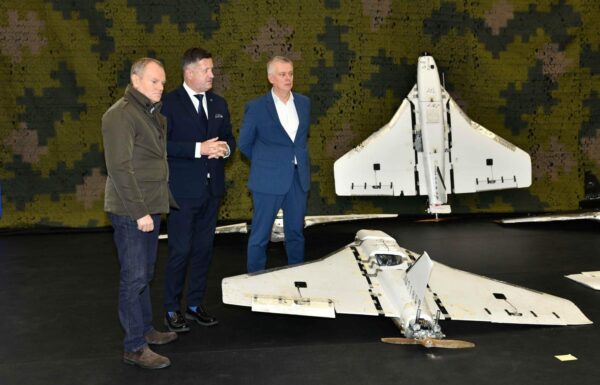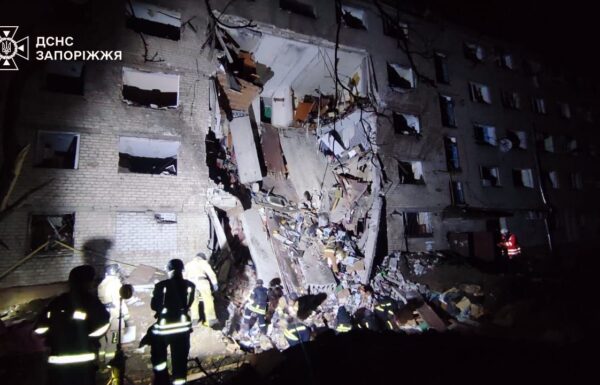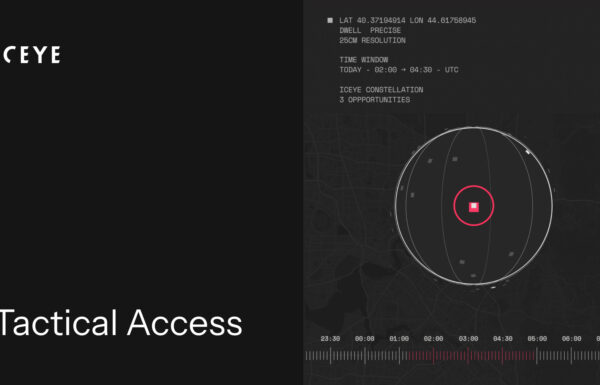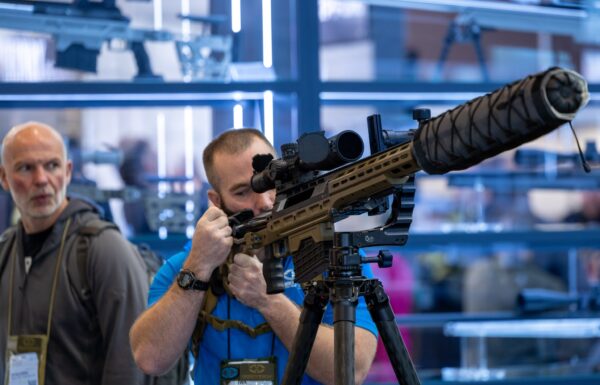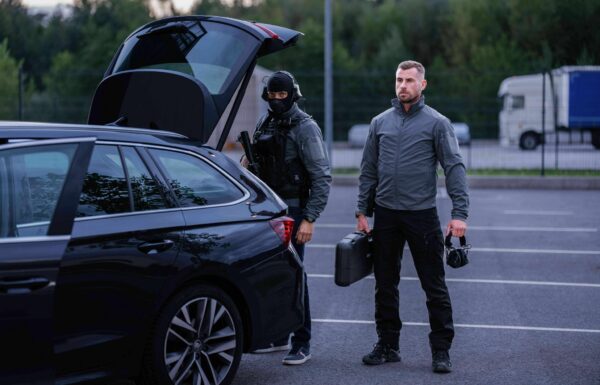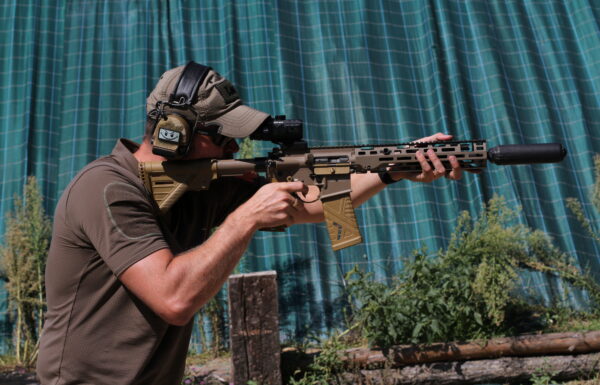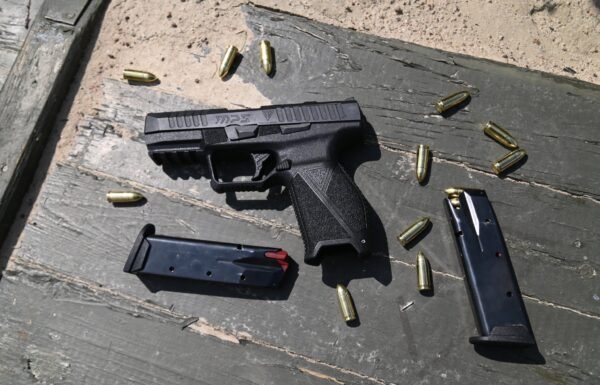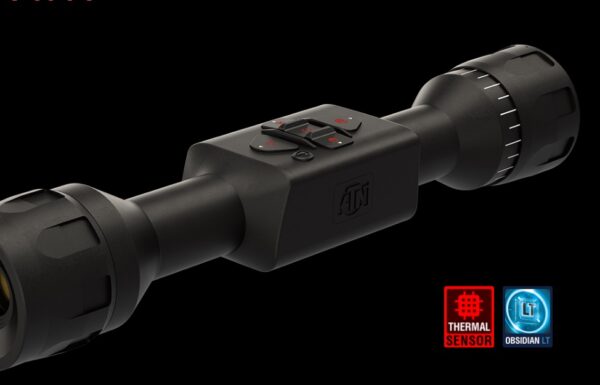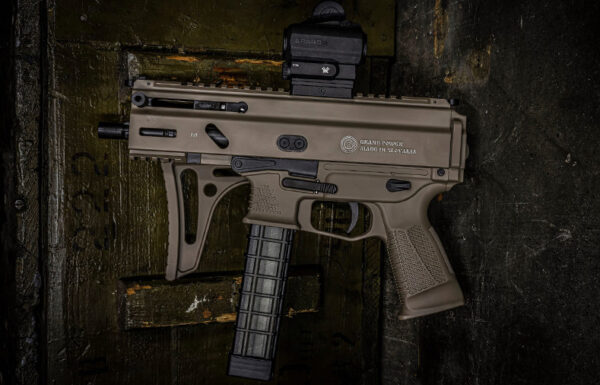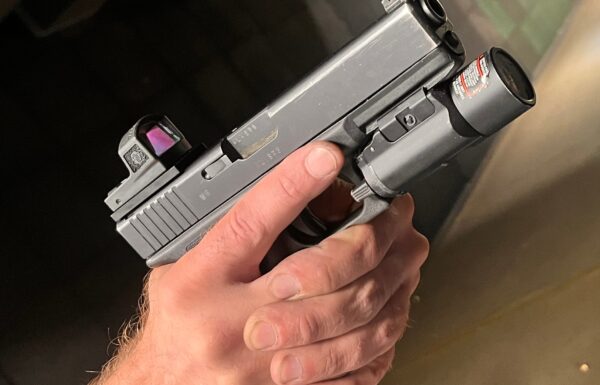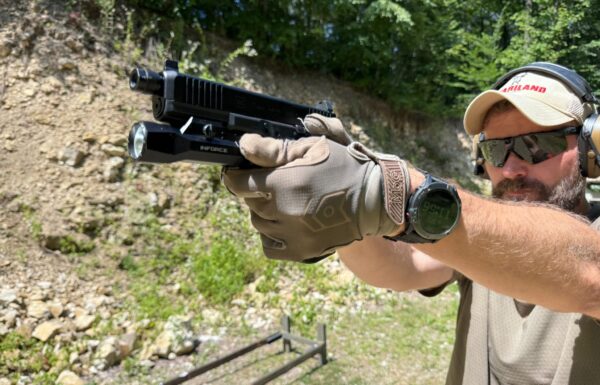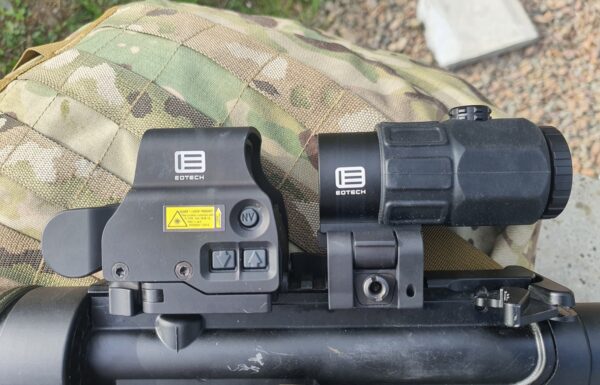On Saturday, May 18, 2024, a new edition of the experimental exercises FEX-2024 (Field Experimentation Exercise) began at the Land Forces Field Training Center in Nowa Dęba, named after Col. Jan Szypowski “Leśnik“, and the training ground in Lipa. Engineers from the Łukasiewicz Research Network – Industrial Research Institute for Automation and Measurements PIAP, along with Zakład Automatyki i Urządzeń Pomiarowych AREX belonging to the WB Group, presented the Institute’s latest robot, named PIAP HUNTeR, equipped with the Remote Weapon Module ZMU-03 (featuring a 12.7 mm machine gun and smoke grenade launchers). The Institute also showcased the medical evacuation and transport version of the PIAP IBIS robot.
 Photo: Małgorzata Fortuna-Ptasiewicz
Photo: Małgorzata Fortuna-Ptasiewicz
This is our second participation in FEX. As one of the few, we prepared robots for the demonstration according to the expectations of the soldiers expressed after the previous edition of the exercises. Łukasiewicz – PIAP is ready to deliver unmanned systems that meet reconnaissance and logistical tasks, as well as those used for personnel evacuation and combat missions, emphasized the Institute’s director, Dr. Piotr Szynkarczyk (HUNTeR with ZMU-03 turret makes its debut on the training ground).
Field Experimentation Exercise 24 is the second installment of the experimental exercise aimed at verifying solutions developed during the process of shaping the Future Task Force (FTF) battalion concept. The first exercise took place in May 2023 as an episode of the Anakonda 23 exercise. For over a week, in training ground conditions, the potential tactical use of such platforms was observed with a view to implementing unmanned ground platforms in the General Staff of the Polish Army’s developing concept – Future Task Force.
The experimental exercises allowed the PIAP HUNTeR system with ZMU-03 remote turret to be showcased in scenarios resembling real operations, with active participation from soldiers and combat vehicles of the 21st Podhale Rifles Brigade of the Polish Army. Such exercises serve as an invitation from the Armed Forces for dialogue between commanders and technology providers, and for working on joint solutions in the demanding environment of the modern battlefield.
 Photo: pvt 1st cl exp Damian Łubkowski
Photo: pvt 1st cl exp Damian Łubkowski
PIAP HUNTeR is a Polish unmanned ground vehicle project that, depending on its configuration, can be used for border surveillance and patrolling, military or urban area monitoring, logistical tasks, as well as providing fire support for light infantry or covering mechanized military columns. The PIAP HUNTeR robot was presented at FEX with the ZMU-03 Remote Weapon Module, equipped with a 12.7 mm machine gun. The turret is manufactured by AREX, a company from the WB Group, and it has been integrated with the robot’s control panel by programmers from Łukasiewicz-PIAP and AREX.
The ZMU-03 Remote Weapon Module is a lightweight turret system developed by AREX, equipped with a 12.7 mm machine gun (.50 BMG), 4 smoke grenade launchers, and an observation head. The system is primarily designed for light wheeled vehicles, including unmanned platforms. The observation head is equipped with a day camera, thermal imaging camera, and laser rangefinder, allowing for the detection, identification, and tracking of objects on the battlefield both day and night. The turret also features a stabilization system for the machine gun and the observation head, as well as a video tracker, enabling the operator to conduct precise observation and fire while the carrier vehicle is moving in the field. The turret is controlled from the operator’s station built into the vehicle or remotely using a portable PIAP console or the U-GATE WB Electronics Personal Command and Observation System from the WB Group.
 Photo: pvt 1st cl exp Damian Łubkowski
Photo: pvt 1st cl exp Damian Łubkowski
The PIAP HUNTeR is an unmanned vehicle with a weight of 4 tons, a length of 470 cm, and a width of 220 cm. The vehicle is powered by two traction electric motors. The PIAP HUNTeR can reach a speed of approximately 50 km/h (depending on the version and application). The platform is equipped with eight high-resolution HD cameras. Additionally, the cameras of the ZMU-03 system can assist the operator in controlling the platform as well as conducting reconnaissance. The robot is also equipped with lidars and stereoscopic cameras, which enhance the operator’s situational awareness.
The mounted generator on the vehicle powers the traction battery. The hybrid power system used allows for both extended operation of the robot and quiet movement in electric-only mode. The vehicle is controlled via a portable console with the option to connect an additional screen.
During the exercises, the PIAP IBIS robot in the transport and medical evacuation version was also presented. This is a 6-wheeled mobile platform with all-wheel drive and adaptive suspension that ensures optimal wheel contact with the ground, providing high mobility. Instead of the standard manipulator, a basket with a stretcher mount was installed. MOLLE system panels were mounted on the sides of the basket, allowing for the attachment of various equipment (e.g., a medical backpack). Folding shelves on both sides of the robot increase the cargo area. The robot’s maximum speed is 10 km/h, it has a weight of 250 kg, and a maximum payload capacity of 200 kg (depending on the type of terrain and mission).
The device has been adapted to transport various types of equipment and supplies, including those for light infantry, such as backpacks, ammunition, or handheld single-use anti-tank launchers. It can also be used to transport an injured person using TALON II 90C stretchers, which can be mounted quickly, easily, and stably.
The PIAP IBIS robot can be controlled from the PIAP HUNTeR robot’s console and can serve as observation support thanks to the mounted PTZ head with a day-night zoom camera and a thermal imaging camera. The radio control of the smaller robot in a network with the PIAP HUNTeR combat robot allows for mutual signal relay, extending the operational range of either unmanned platform. Both vehicles are equipped with a positioning system based on GNSS, enabling the display of position, geographic coordinates, and heading on the control panel’s map overlay, which also marks the route taken. The high off-road mobility of the robot proved effective in the training grounds of Nowa Dęba and Lipa.
As reported by the Command of the Cyberspace Defense Forces (DK WOC), the BMS LEGION battlefield management system, developed and implemented in the Polish Armed Forces by the DK WOC, played a key role during this exercise. This system is one of the foundations of the Future Task Force concept, elements of which are being evaluated during the FEX-2024 exercise.
 Photo: 18th Mechanized Division
Photo: 18th Mechanized Division
Additionally, during the exercise, DK WOC is conducting research as part of the AI Artificial Intelligence in Image Recognition project. This research tests issues such as conducting image reconnaissance using UAVs in various conditions and processing metadata using AI. Specialists from various fields of software engineering and cyber technology are collaboratively verifying 12 theses concerning key technologies to meet the needs for the automation of reconnaissance and combat systems.
 Boston Dynamics Spot / Photo: pvt 1st cl exp Damian Łubkowski
Boston Dynamics Spot / Photo: pvt 1st cl exp Damian Łubkowski
Another novelty was the semi-autonomous, biomorphic walking robot, Boston Dynamics Spot, classified as a Q-UGV (Quadrupedal Unmanned Ground Vehicle), previously known for its civilian applications. Currently, the American manufacturer is 80% owned by the South Korean company Hyundai Motor Company.
18 maja br. na poligonie w Nowej Dębie rozpoczęło się
ćwiczenie FEX-24.Field Experimentation Exercise 24 to druga odsłona ćwiczenia eksperymentalnego, którego celem jest weryfikacja rozwiązań wypracowanych w trakcie procesu rozwoju koncepcji batalionu przyszłości – FTF. pic.twitter.com/ogj4ba0Hvk
— 21 Brygada Strzelców Podhalańskich (@21_bsp) May 20, 2024
Based on press releases
Gallery:
 UNL (Universal Ground Carrier) from Polish company MACRO-SYSTEM
UNL (Universal Ground Carrier) from Polish company MACRO-SYSTEM
 The launch platform used was either a tube launcher or the Milanion AGEMA unmanned wheeled platform
The launch platform used was either a tube launcher or the Milanion AGEMA unmanned wheeled platform
 Giez Warble Fly – loitering munitions from Polish company MPS
Giez Warble Fly – loitering munitions from Polish company MPS


